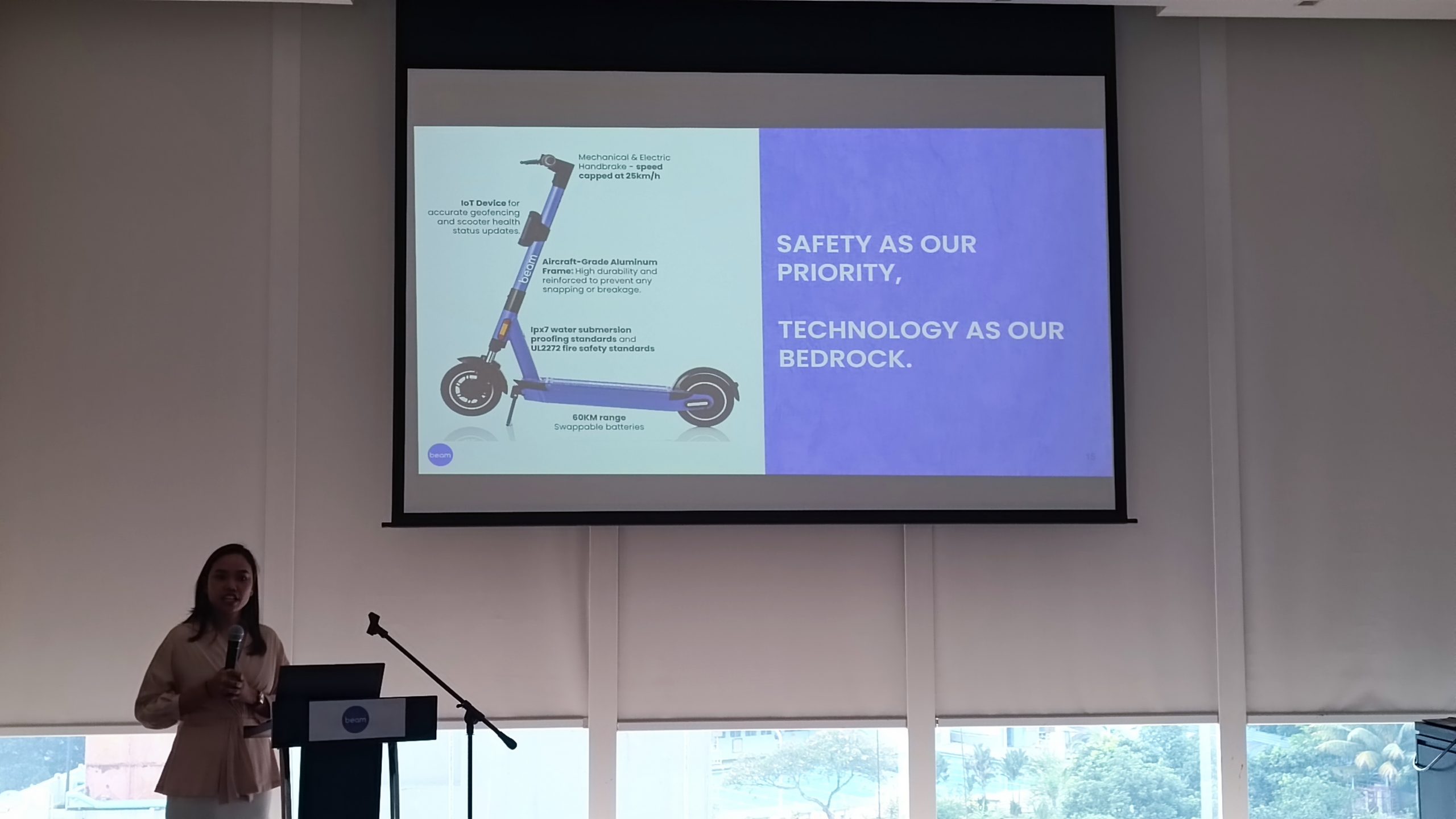Beam Mobility launched its Drive Something New Today campaign to educate consumers on alternative, convenient, and more sustainable modes of transportation as part of Malaysia’s transportation system evolution. The campaign aims to highlight the critical role that its shared e-scooter service plays in resolving the everyday issue of completing first and last mile journeys when using public transportation.
Beam’s mission is straightforward: to improve small drives and make cities run more smoothly for everyone.
Beam e-scooters bridge a long-standing gap in our public transportation system by connecting people with ease and convenience to transit stations, popular destinations, and hotspots. This increases the use of public transportation while decreasing reliance on private vehicles. Beam, which uses e-scooters for single-person travel within cities, complements the existing public transportation ecosystem as a more convenient, accessible, and healthy way to get around. Riders save 2.65kg of CO2 emissions for every 10km ridden on a Beam instead of a car.
In a recent poll of micromobility riders conducted in May 2022, nearly half of the 1,800 Beam riders polled stated that having access to e-scooters for the “first or last mile” of a journey made them more likely or significantly more likely to consider using public transportation as an option for long journeys rather than driving or using ride-hailing services. This attitude is reflected in actual behaviours, with 77 percent of regular riders stating that they always, usually, or occasionally use an e-scooter to connect to or from public transportation.

“Beam’s e-scooters are built for convenience and to encourage people to opt for greener commutes within the city centre. With its growing availability in key transit points and destinations around the Klang Valley, the ability to quickly hop on and off an e-scooter to travel door-to-door in minutes gives Malaysians an easy and convenient solution to the first and last mile challenges of public transport usage. Moving between places that are too far for a comfortable walk, and too short a distance to drive, is solved with our e-scooters” said Taty Azman, Head of Public Affairs, Beam Mobility Malaysia.
The surveys show how open Malaysian citizens are to the possibility of shared e-scooters operating in their cities, with only 9% of the 1,544 citizens polled expressing any negativity toward the idea. This number was cut in half after they learned about the safety features, convenience, and environmental benefits of shared e-scooters.
Technology-Powered for Safe Riding
Safety is top priority at Beam, and the company is deeply invested in the safety technology of its e-scooters. Underneath the Beam e-scooter’s sturdy aircraft-grade aluminium chassis hides an efficientelectric powertrain and a high-grade IoT communications device that works to ensure its riders’ safetyand responsible operation. This enables features such as Beam’s proprietary virtual parking technology, which encourages proper use and return of e-scooters, while its speed-limiting technology (capped at 25km/h) keeps users from going too fast – even when riding downhill.
Beam e-scooters are also equipped with geofencing technology to ensure that e-scooter riders stay within designated areas approved by local councils and regulators for micromobility vehicle use. This ensures the safety of the riders, pedestrians, and other vehicles, while also allowing Beam to identify inappropriate usage or placement of its vehicles and resolve it immediately. Finally, all of Beam’s e-scooters are outfitted with batteries that have been certified to the highest fire safety standards.
Beam’s commitment to safety goes a step further with the mobility provider’s in-person flagship safety programme called the Beam Safe Academy. Meticulously curated and conducted by Beam’s certified
instructors, the programme educates attendees on proper e-scooter usage such as safe parking methods, good riding habits, and local micro mobility laws. This looks to ensure the safety of not only Beam’s riders, but also for pedestrians and other vehicles around them.
“The added mobility of using a Beam e-scooter not only completes the first and last mile of a user’s
journey, it is also a great way for one to explore the sights of a city as well. With Beam, and leaving your car behind, exploring your city becomes more accessible and convenient. It’s great for users whether you’re a local or tourist, and great for local businesses as well,” added Taty.
Boosting the Local Economy
Beam’s e-scooters have the potential to generate greater footfall and exposure to local businesses, spurring local economy and tourism. The Beam Booster programme – a platform that highlights local businesses through Beam’s proprietary virtual parking technology, encourages Beam riders to make a pit-stop or end their journey right in front of a Beam partner’s doorstep, generating interest and gaining revenue for their business.
Beam, in accordance with the 12th Malaysia Plan, provides employment opportunities in the gig economy in addition to improving public transportation connectivity and increasing footfall for local businesses. Beam, as an MDEC e-Rezeki partner, employs over 250 Malaysian gig workers as Beam Rangers to perform important maintenance tasks on its high-technology e-scooters, ensuring that Beam e-scooters are in top working order for users.
Moving forward, with the 12th Malaysia Plan recognising micromobility as an essential component of the public transportation framework, Beam’s continued collaboration with federal agencies and local councils provides valuable insights into the development of pedestrian and micromobility friendly infrastructure. As e-scooter usage grows, cities will become more accessible while users, pedestrians, and motorists will remain safe.
Beam Mobility also strives to make its e-scooters as accessible and affordable as possible to all Malaysians. The #BeamForAll campaign promotes equitable access to transportation services by tailoring their prices to specific community segments, making them a viable option for first and last mile transportation in underserved areas.


